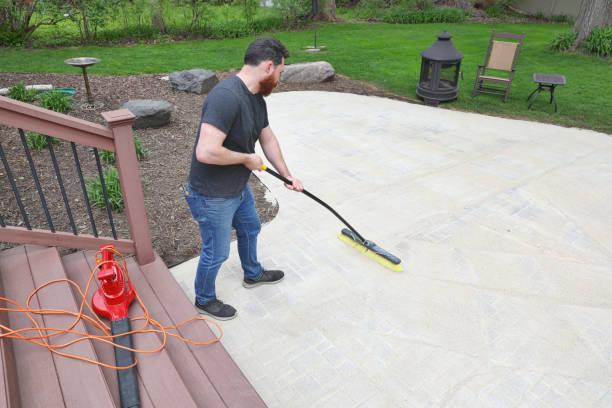Land Clearing: A Vital Step for Property Residential

Residential land clearing is the process of preparing a property for construction, landscaping, or other residential developments by removing trees, brush, debris, and other obstacles. Whether you’re building a new home or enhancing an existing property, land clearing ensures a safe, functional, and attractive space. This article explores the importance of residential land clearing, methods involved, and key considerations.
Why Residential Land Clearing is Important
Clearing residential land is essential for various reasons, as it plays a critical role in shaping the future of your property. Here are some of the key benefits:
1. Creating a Solid Foundation
A major part of residential construction involves laying a strong and stable foundation for your home. For this, land must be cleared of trees, roots, and rocks that could interfere with building processes. A smooth, level surface ensures the stability and durability of the structure.
2. Enhancing Property Value
Clearing your land enhances its visual appeal and overall value. A clean and organized lot offers potential buyers a blank canvas for landscaping and development. It also removes the eyesores of overgrown vegetation or debris, which can negatively affect curb appeal and property value.
3. Improving Safety
Clearing land helps mitigate potential safety risks. Overgrown brush, trees, and other debris can be fire hazards, especially in areas prone to wildfires. By removing dry vegetation, you reduce the chances of accidental fires spreading across the property. Additionally, clearing the land improves accessibility, making it safer to navigate the space during construction or later use.
4. Facilitating Landscaping and Outdoor Living
A cleared lot gives you the freedom to design your outdoor space to suit your needs. Whether you’re planning a garden, patio, or outdoor entertainment area, clearing the land gives you the flexibility to design a space that complements your home and lifestyle.
Methods of Residential Land Clearing
There are various methods to clear land depending on the size of the lot, vegetation type, and the intended project. Below are the most common techniques used for residential land clearing:
1. Manual Clearing
Manual clearing is the most hands-on approach and involves using hand tools such as chainsaws, axes, and pruning shears. This method is ideal for small plots with light vegetation and minimal obstacles. It’s a more time-consuming process but is environmentally friendly and inexpensive.
2. Mechanical Clearing
Mechanical clearing is more efficient for larger residential lots or areas with thick vegetation. Equipment like bulldozers, excavators, and brush cutters are used to remove trees, stumps, and dense underbrush quickly. These machines can clear the land faster and with less manual labor, making them suitable for bigger projects.
3. Stump Grinding
After trees have been cut down, the remaining stumps can be ground down using specialized stump grinders. This method helps eliminate leftover stumps and roots, preventing regrowth and making the lot ready for construction or landscaping.
4. Herbicide Application
For stubborn vegetation or invasive plant species, herbicides may be used. These chemicals help control growth and prevent regrowth after clearing. While effective, herbicide use should be approached with caution and applied by professionals to avoid unintended harm to the environment.
5. Burning
In some cases, controlled burning may be used to clear vegetation. This is a more common method in areas with large expanses of brush or dry grass. However, burning must be closely monitored and performed by trained professionals to avoid accidents or uncontrolled wildfires.
Key Considerations for Residential Land Clearing
While land clearing is a necessary process, it’s important to consider several factors before beginning:
1. Legal and Environmental Considerations
Before clearing land, check for any local regulations regarding tree removal, wildlife protection, or zoning laws. Some areas may have restrictions on the type of vegetation that can be cleared, especially if it involves protected species or ecosystems. Always ensure that your land clearing activities comply with environmental laws to avoid fines or penalties.
2. Cost and Budget
Land clearing can range from a few hundred to several thousand dollars, depending on the size of the lot, the type of vegetation, and the method used. Be sure to plan and budget for these costs before starting the project. Getting multiple quotes from contractors can help you understand the pricing in your area.
3. Hiring Professionals
If you are unfamiliar with land clearing techniques or lack the necessary equipment, hiring a professional land clearing service is often the best choice. These professionals have the experience and equipment to clear your land efficiently, safely, and in compliance with regulations.
4. Safety
During the clearing process, land clearing Conroe. Always wear protective gear, such as helmets, goggles, gloves, and boots. If you are using heavy machinery, ensure that the operators are well-trained to prevent accidents and injuries.
Conclusion
Residential land clearing is an essential step in preparing your property for construction, landscaping, or other improvements. Whether you opt for manual clearing or mechanical equipment, the right method depends on the size and complexity of the lot. By removing vegetation, trees, and debris, you’ll create a safer, more aesthetically pleasing space that enhances the value of your property. With proper planning, budgeting, and safety considerations, residential land clearing will pave the way for a successful development project.
- Art
- Causes
- Crafts
- Dance
- Drinks
- Film
- Fitness
- Food
- Jogos
- Gardening
- Health
- Início
- Literature
- Music
- Networking
- Outro
- Party
- Religion
- Shopping
- Sports
- Theater
- Wellness


